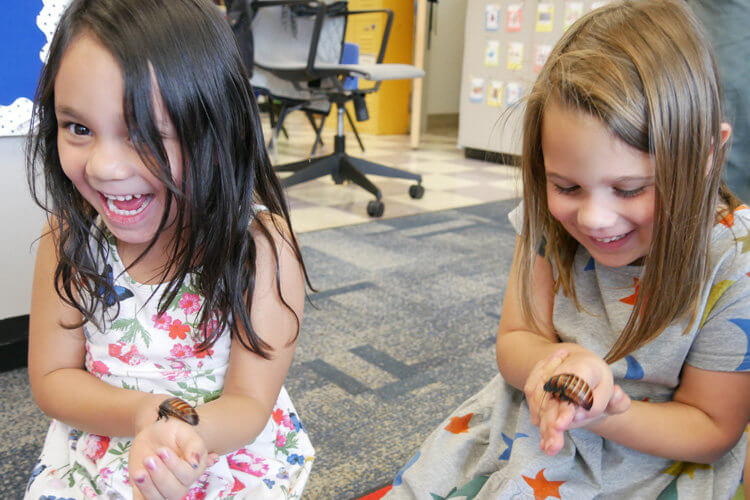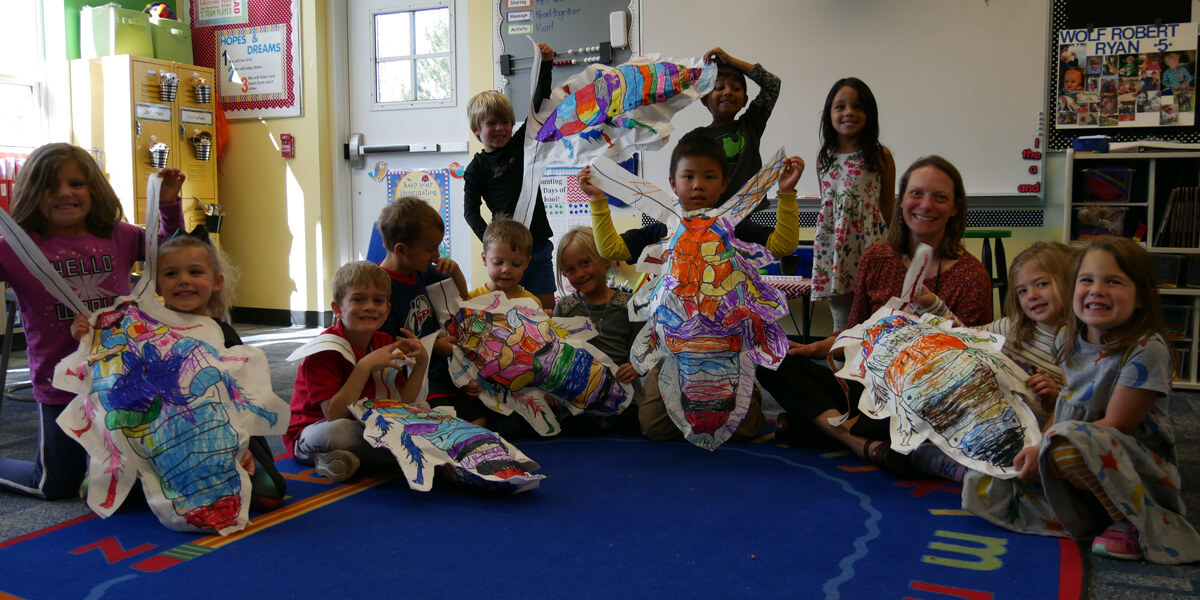At Colorado Academy, we promote curiosity and wonder in our students’ minds in every subject, and science is no exception. Our science teachers design learning experiences that are hands-on, collaborative, and often include opportunities to learn side by side with real scientists working in the field. Our students engage in the scientific method—asking questions, observing, experimenting, analyzing, and drawing conclusions—and take these skills with them when they leave the classroom.

Science studies in the Lower School begin in our earliest grades with curriculum designed to explore the world around us, right here on campus. As students move through the grades, their scientific discovery takes them outside of our local environment to the State of Colorado, inside the human body, and even into outer space. Perhaps some of our current topics in Lower School Science classes will activate a science bug in you!
- Pre-Kindergartners are making a vermicomposting bin.
- Kindergarten students are learning about the animals that live in the science classroom.
- First Grade’s spider study took them off campus to meet with an arachnologist.
- Second Grade is studying weather, including a project where they map the 1992 Hurricane Andrew.
- Third Grade science students are becoming experts on the structural and behavioral adaptations of the animals and plants in the Prairie Ecosystem. This unit is connected to classroom curriculum studying the State of Colorado and a field trip to the Plains Conservation Center.
- Fourth Grade recently observed a beekeeper in action at one of our CA beehives, in preparation for a unit where they conduct scientific experiments on systems.
- Fifth Grade students are conducting and analyzing experiments on energy. They also maintain a journal about our on-campus body of water, Woody’s Pond, throughout the school year, recording the seasonal changes in the pond environment.
Don’t miss STEAM Night!
This year, I have had the privilege of helping out with two Kindergarten science classes. In one, we read a book about sharks and did a guided drawing of a hammerhead shark, identifying the parts that make a shark, a shark. In another lesson, we observed the Madagascar hissing cockroaches in one of the science classrooms, read about them, and then in small groups the students colored giant-sized cockroaches to be cut out and stuffed.
These lessons of discovery with Kindergarteners activated my enthusiasm for science and made me even more excited for this year’s STEAM Night, which will be in January. The annual event is an opportunity for parents and children to explore science, technology, engineering, art/design, and mathematics in new and creative ways. Scientists from the Denver Metro area and CA faculty offer engaging, hands-on activities for our own inquisitive and investigating minds. STEAM Night is a great opportunity outside of the classroom for CA students to see how fun science can be and just how it fits into the bigger picture of real life.
